- It’s What We Do
- Toby Price
- 14 Days In Northern Thailand
- Neck Braces
- Timor-Leste
- Ol’ Mate
- Coping With A Dunking
- Cameron Corner
- Landlocked In Laos
- Triumph Tiger 800XCx
- Shop Bike
- How To Ride with Miles Davis
- Can’t Judge A Book By Its Cover with Karen Ramsay
- Media Release With A Catch
- Preparing For Adventure with Robin Box
- Readers’ Ride: Victorian High Country
- FUSA
- Reader’s Pic
- Video Winner
- Adventure Film Festival
- Checkout
- Contributors
One tough MoFo
Adventure Rider Magazine’s KLR650 has taken a pounding. If ever there was a tough bike, this is it.
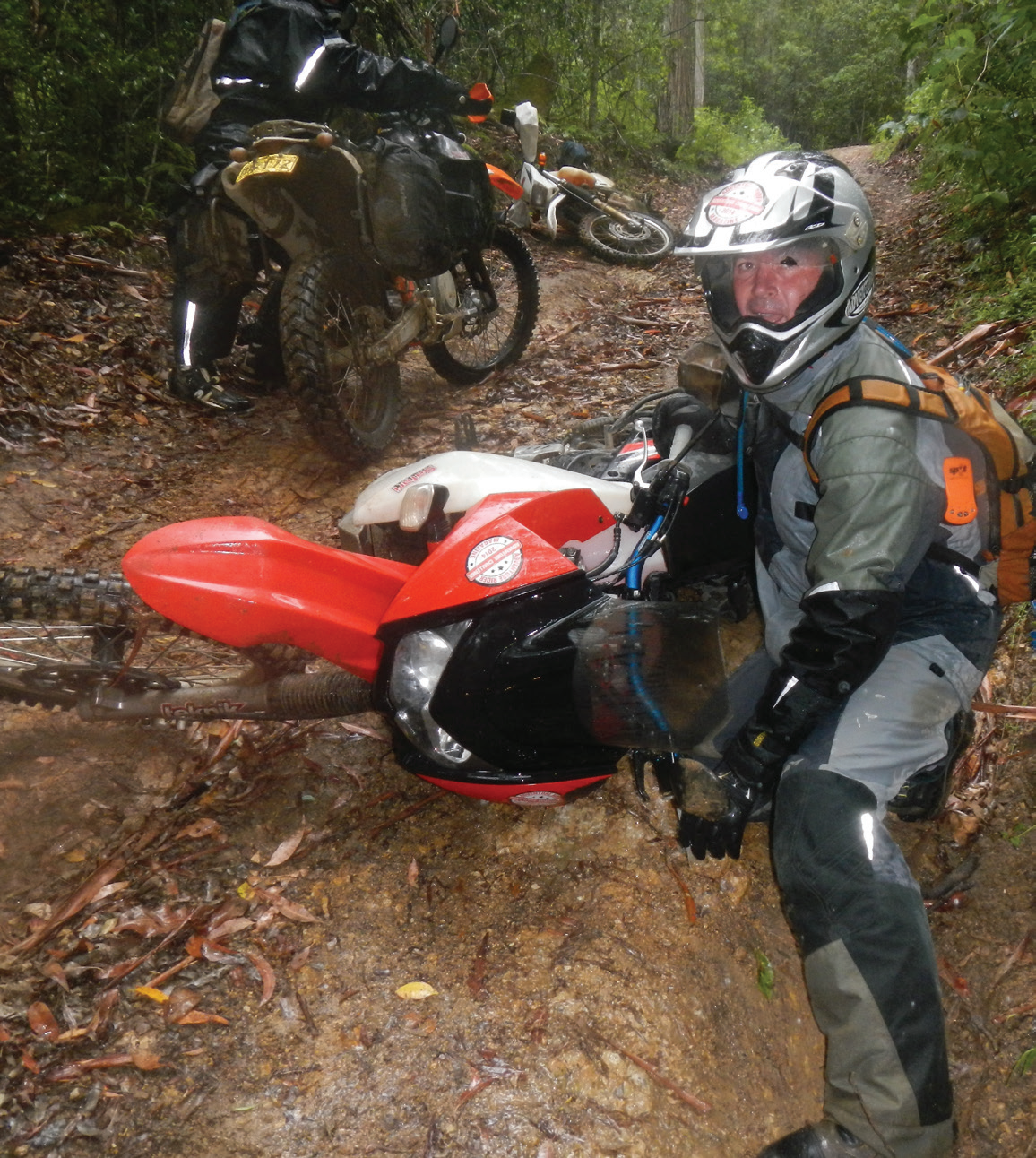
When we last had a look at the magazine’s 2009 KLR it was being set up for ADVX and the editor was pounding around the countryside with it loaded to the max to make sure it was ready.
The bike made everything seem easy, and if the luggage load worried it any, it didn’t show. The bike kept munching away on long distances and tough terrain – swag, tools, lack-of-maintenance and all.
Everything was rockin’…until it was time to pretty the bike up and send it down to the Moto Expo in Melbourne.
Tank you!
The folks at Safari Tanks sent one of their superb, 30-litre fuel cells, and it was fitted just before the bike began its journey to Melbourne.
As with every Safari Tank we’ve ever used, the KLR model slipped into place with a minimum of fuss. All the plumbing, mounting brackets and hoses were supplied, and the only problem we had fitting the thing was with the stainless steel crossbrace under the tank needing a tweak to line up on one side.
No drama, pig farmer!
Not a problem, but a little scary for us because we’re not too precise with any kind of hardware work, was trimming the skirt of the radiator. It’s all outlined in the instructions supplied with the tank, and it turned out to be as easy as falling backwards down a slippery, rocky hill in the rain, but it was a little stressful for us.
We cut, tweaked, bolted and, because the bikes need to be dry of fuel to be displayed at the Expo, left the tank empty.
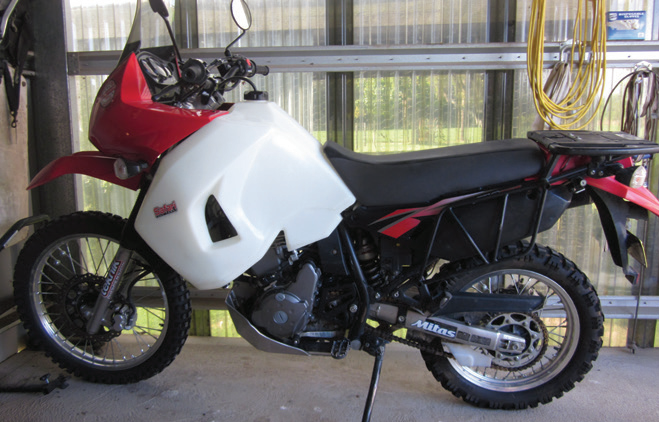
Neat
The Safari Tank is interesting in a couple of ways.
Because the tank replaces the lower fairing sections on each side, the outline of the bike is unchanged. The Safari fuel tank with its extra capacity doesn’t change the size of the bike by even the tiniest amount.
Another facet of that change is that the sides of the tank offer considerable protection to the radiator on one side and reservoir on the other.
Finally, because we asked for the translucent tank, checking the fuel level is as easy as looking over at the bike while you stir your cappuccino.
It’s brilliant.
Seeing as the tank was bone dry, we marked the 10-litre and 20-litre levels with a texta as we filled it for the first time. It’s not perfect, but it’s an approximation. And it’s handy, because something that’s taking a while to get used to is how much capacity is in the upper part of tank. At the bowser you splash in a little fuel and the tank suddenly looks half-full. Another splash and it’s filling fast. But then you scratch your ’nads and look around,maybe zero the tacho and see if it’s a good-looking sheila on the console in the servo, and you look down and see you’re $35 in the hole and the fuel level doesn’t seem to have risen more than about 10mm.
The same goes the other way, of course.
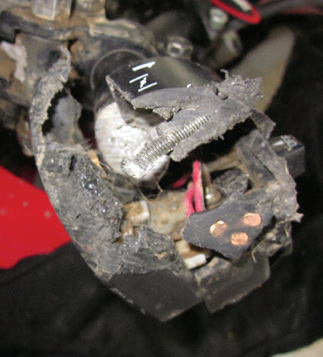
You ride around all day and hardly seem to use any fuel, then suddenly it seems you’d better find a servo. Fast!
The range of the KLR with the Barrett pipe and Safari tank is around 500km of mixed riding, and the balance of the bike, thanks to the Teknik suspension, stays surprisingly neutral right up to about three-quarters of capacity. With a full load on, the bike’s front tends to plough a little, but the only times you’d fill the tank are times when an hour or so of top-heaviness are the last things you need to worry about.
We also saw a comment on the AdvRiderMag forum that the fuel trapped in the front lower regions of the tank is lower than the fuel taps, therefore unavailable. It looks like this is true, but when we were checking the range, we ran the tank down to where the fuel wouldn’t draw any more, and it still took over 30 litres according to the bowser, so we don’t feel as though there’s any misrepresentation about the tank’s capacity.
And if you were stuck somewhere, you’d find some way of getting to that fuel. For sure.
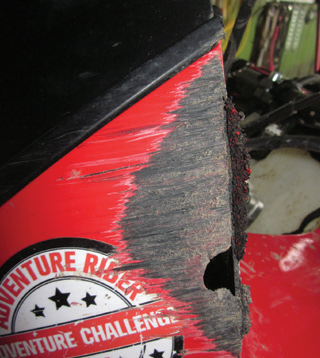
’Bar none
Another mod since last issue was the addition of new ’bars and risers.
This was personal tuning to suit the editor.
The 50mm risers allow the ’bars to be moved forward, and the handlebars them-selves are a flatter bend than the stockers, so the height gain is deceptive. It’s probably something like 20mm.
Having the handlebars set a little further forward meant the handguards had to go, because they were smacking into the screen.
Finally, Andy at Andy Strapz sent us a prototype tankbag designed for the Safari Tank.
So with the bike clean, shiny and starting to look good, it was shipped off to Melbourne, and that’s where things became a little…smashy.

Trailer trash
It was actually on the way back from Melbourne that the bike fell off the trailer.
We weren’t there, but apparently the bike didn’t leave the trailer, it just fell and dug the left handlebar into the Hume Highway.
The result wasn’t pretty.
The left ’bar, being alloy, had ground away on road and what was left was melted into a mushroom shape and kind of melded with the remains of the switchblock and clutch perch. The switchblock had copped it fairly hard, the mirror was no better, and the fairing had a few battlescars and a fair chunk was missing from the corner of the screen. The gear selector was bent back against the engine casing, but still in one piece.
A new set of ’bars from the ones stored in the shed, a new switchblock for $185, some fiddling and straightening, and everything was pretty much ready to go again.
Except it wouldn’t
Some professional help was sought and it turned out the battery was shagged as well.
Another $230 spent and the bike was running sweetly, straight, and busting to go.
The editor headed out for a weekend ride, only to dump the bike in a creek – twice, once on each side – and then make a mess of a not-very-difficult hill. The trip on its side down the rocky hill snapped off the clutch lever, but didn’t seem to do any other damage… nothing that could be seen as new, at least.
A new clutch lever was slipped in and the bike carved off another faultless 500km or so Tough, and so dead-set unbreakable that it’s a dream to ride anywhere.
Interesting
It was an overnight ride, so the panniers had a few clothes in one side and tools in the other. Both panniers were completely submerged in separate creek cock-ups, and yet both kept their contents bone dry.
Andy Strapz gear rocks – not that we mind our tools getting wet occasionally.
The editor is in raptures about the footpeg mod (see issue #07) and claims the KLR is now probably the most comfortable stand-up bike he’s ever ridden.
We couldn’t get the tankbag sorted for this ride, so we’ll let you know about that when we work on it a little more.
Meanwhile, the KLR seems just about ready for any major ride that may come along.

Next up
Originally the bike was being prepared for ADVX, but it’s beginning to look like it won’t be let loose on that epic. The essentials of motor, suspension and rider tuning seem to be well advanced. At this stage we’re pretty confident there’s no ride this bike couldn’t do.
Now it needs some general maintenance: brake pads, oil change, new clutch lever…small things.
But when the bike is as tough as this one, once it’s set up that’s about all it needs.
 Sneaky, but very helpful when working out distances and available range.
Sneaky, but very helpful when working out distances and available range.
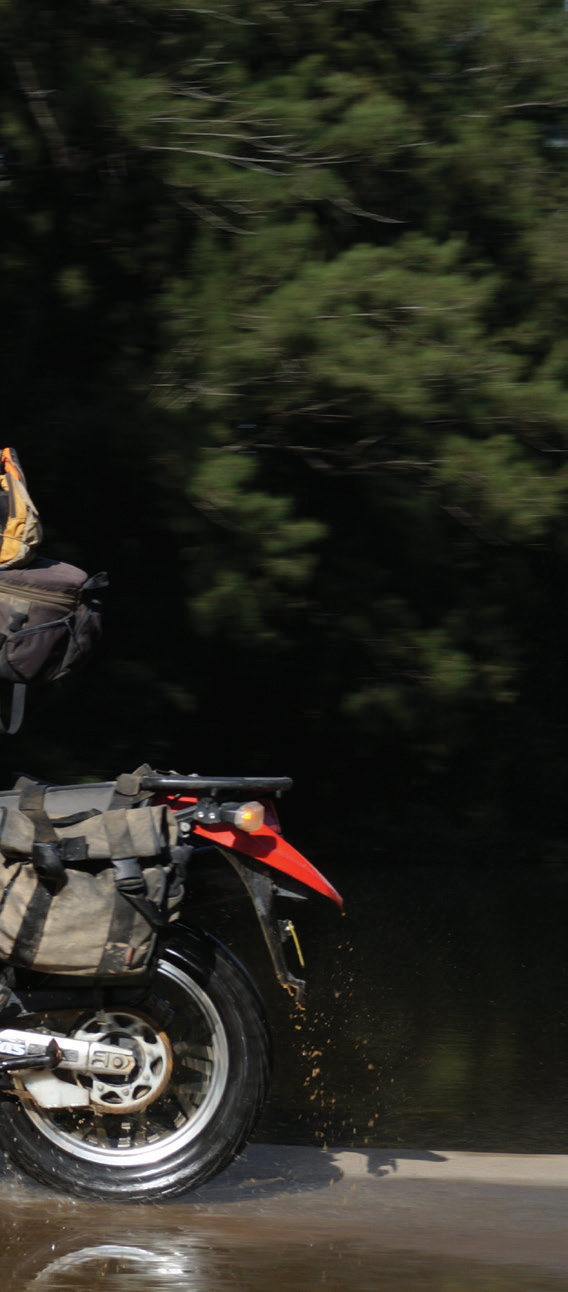 The editor says the KLR is supremely easy and comfortable to ride. He’s bragging he’ll take it anywhere and do anything. Obviously he said that before he fell in the creek and got stuck on the hill.
The editor says the KLR is supremely easy and comfortable to ride. He’s bragging he’ll take it anywhere and do anything. Obviously he said that before he fell in the creek and got stuck on the hill.

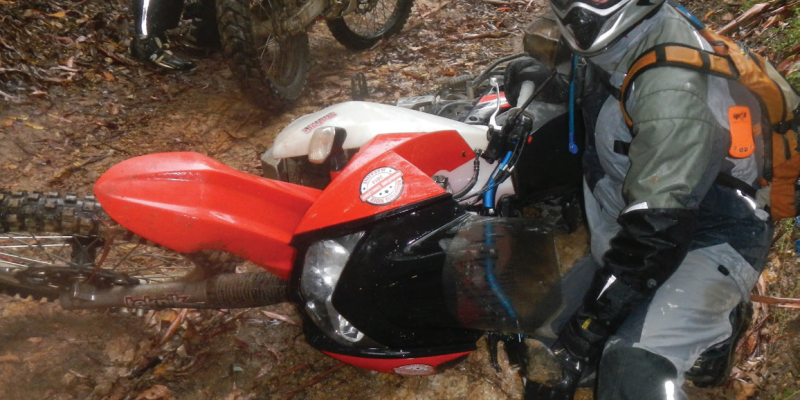

















Comments